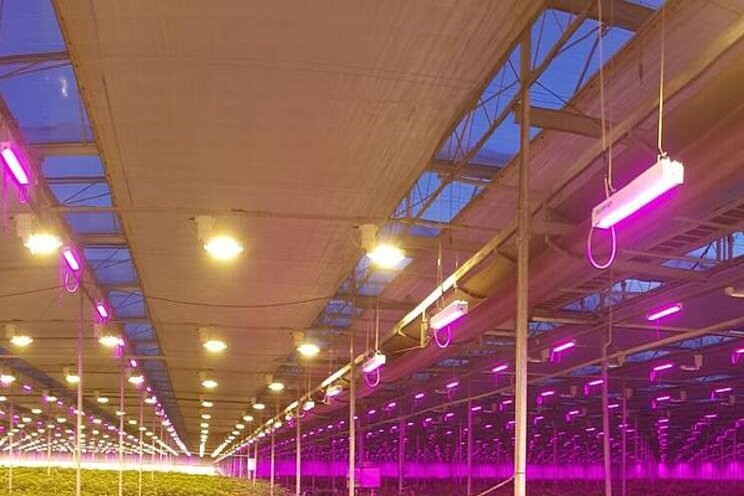Multiple reasons to invest in LED grow light
Added on 02 June 2020

This figure came from a Hortilux survey of 130 growers in the Netherlands and abroad, the main conclusions of which are summed up in a knowledge document. Most growers stated that they prefer a combination of LED and HPS grow light.
LED grow light has been gaining ground in recent years, and for good reason. Increased (light) efficiency, quality and production gains, improved co-ordination with the light requirements of the crop, limited heat emission, energy savings: these are all reasons why growers want to invest in LED grow light. But that's not all: the growers who participated in the Hortilux study also mentioned the advantages of stronger, more controllable growth, increased light intensity with the same energy use, and reduced use of growth regulators. The survey respondents were 130 growers of pot plants, cut flowers, fruit, vegetables, and medicinal cannabis, as well as breeders and propagators.
Combination of LED and HPS
However, most growers do not want to invest in LED on its own; their preference is for a combination of LED and HPS. Price plays an important role in this; a large number of respondents stated that a lower price would be the deciding factor in making the switch to (100%) LED. In addition, some crops do require heat, and employees are better able to orient themselves under HPS grow light. Other factors that could tip the balance in switching to full or part LED include more knowledge about the (correct) use of LED, more proven results, sustainability gains, and higher returns on investment.
Focal points
Several chrysanthemum growers said that they would like to make the switch to LED because it would mean more lighting hours were possible in spring and autumn. "It also enables more growth and we would be better able to meet the crop's light requirements," one chrysanthemum grower says. "In addition, air treatment combined with an investment in LED would create a better climate for the plant. However, this carries additional costs. On top of that, the desired light intensity and energy saving (sustainability) are important points to consider, as is the payback period."
A Belgian tomato grower wants to use LED to make more photons available to the plant, without too much heat. "We'll use a hybrid system for the next five years, and after that I want to switch over to completely using LED. Price and efficiency are important preconditions. Regarding the optimal light spectrum, the preference is for white LED lighting, because the staff find red and blue light difficult to work in."
High efficiency
According to André Flinterman, account manager at Hortilux, the investment in LED grow light is generally higher than what growers are used to for HPS. On the other hand, the annual costs per unit of product are lower. "At Hortilux we think along with growers to work out how we can keep these costs as low as possible. In many cases HPS fixtures can be replaced by LED fixtures on a one to one basis, without the need for modifications to the electrical installation and ground cables. This reduces the up-front investment for the grower, while the operational costs of the LED fixtures are much lower. After all, either the energy consumption is lower or you achieve higher yields using the same amount of electricity. In short: the light is used more efficiently."
According to Flinterman, the Hortiled Top - developed by Hortilux - can play an important role in this too. "It's the most efficient LED fixture on the market. With an efficiency of 3.5 µmol/W the light output of the Hortiled Top is up to twice as high as that of an HPS fixture. With the Hortiled Top we chose to distribute the LED grow light over several modules. This means better grow light penetration of high-growing crops. We don't use light cannons; we aim for the highest yield from each micromole of PAR."
These days LED grow light is usually combined with HPS; Flinterman says it's important to choose the right reflector. "Often this is one with a narrow angle; this reflector also ensures better light penetration of high-growing crops. In combination with the Hortiled Top, you can create the ideal scenario."
Knowledge-sharing
Hortilux has also seen that growers have a need for more information on the properties of the various grow light systems in general, and cultivation with LED grow light in particular. Most growers are still trying to achieve the ideal light recipe or cultivation formula for their crop. Hortilux is responding to this by increasingly sharing knowledge via knowledge events and masterclasses. Hortilux and its partners also assist in finding the ideal light spectrum by carrying out both practical and field research, in consultation with growers.
Would you like to know more how to use LED grow light efficiently?
Hortilux's account manager and Grow Light Performance Consultants are here to help. For more information, please contact Paul van der Valk (+31 (0)6 516 05 780 or p.vandervalk@hortilux.com).
Source: Goedemorgen
More news















